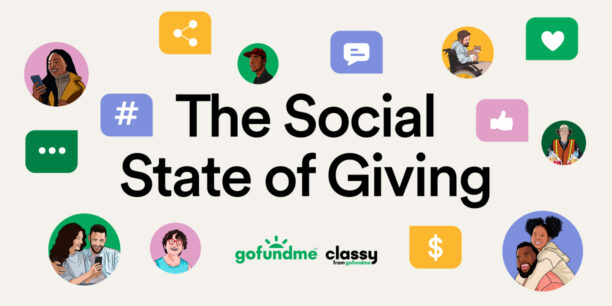The Nonprofit’s Guide to Market Research

Only 43 percent of donors give year after year. This means that 57 percent of donors are open to considering a new cause to support. That’s where market research comes in. When you get your hands on the right information, you can get in front of these impressionable donors and recruit more supporters to your cause.
To better understand how nonprofits can use market research to support their work, we spoke with consultant Pauline Lewis. A partner at CauseMic, Pauline has 20 years of experience in market research with Fortune 100 clients. She believes the application of market research principles in the nonprofit world can play a significant role in shaping the direction of the nonprofit and that the value of this kind of research is that it’s taken straight from the source.
There is nothing more meaningful than getting information directly from the donor.
This piece will outline what market research involves and then discuss practical tips for getting started to help your organization understand how to apply it.
What is Market Research?
Market research is the act of gathering information about supporters’ preferences.
While an increasing number of nonprofits understand the importance of data, not all of the data you need to run a successful organization can be collected through in-platform social or web tools. Data from Google Analytics, Facebook Insights, and Classy reports provide cumulative, observational data. What’s missing from these tools are answers to the “why” questions. Why do supporters interact with your nonprofit in the ways that they do? What drives them? What are their preferences?
Understanding the “why” can only be achieved through market research. This data sheds light on your supporters’ intentions, motivations, and behavior. When you understand this information, you can shape your nonprofit’s strategy in a proactive rather than reactive way. This will allow you to better serve the supporters who invest in your mission.
Market Research Insights
Market research can inform several different pieces of your overall strategy. Gathering information on your supporter base and the industry landscape will help you:
- Gain awareness. Discover who your supporters are. Knowing who is invested in your success and why can help you make the best decisions for your nonprofit.
- Enhance communication. Segment your audiences and create more targeted messaging.
- Strategically market your organization. Hone your messaging and marketing tactics to increase your donor conversion rates (i.e., greater ROI for every marketing dollar spent).
- Develop your brand. Learn what your supporters think of your brand. Know how your supporters view you in relation to other organizations in order to further develop your niche or differentiators. It could be the catalyst for change or the knowledge that you’ve hit the nail on the branding head.
- Test messaging. Adjusting your nonprofit’s mission? Understand how your new approach to your mission or initiative scores with existing supporters.
There aren’t clear boundaries between each of these applications because once you have a general awareness of your supporter base, you can make more informed, strategic decisions across the entire nonprofit.
There is a certain amount of money available. Where is that money going to and why? Once you understand that, you can begin to refocus your message to speak specifically to supporters who are going to be more likely to give to you, and therefore increase your ROI on every marketing or outreach dollar that you spend.
Now that we’ve reviewed what you have to gain from market research, here are steps for getting started:
Step 1: Establish Objectives
In this phase, it is important to determine what information you want to collect and how you plan to apply it practically.
Think about the information you want to know as a statement.
Example: We want to know what…
- Different supporter groups think about the frequency of our communications
- Feelings are evoked in supporters by our current brand
- Programs millennial donors are most interested in learning more about
The phrase “GIGO,” or “Garbage In, Garbage Out” definitely applies to market research. You have to know what end result you want from the question before you ask the question. That ties back to your objectives. In market research, there’s no such thing as a bad answer, just a bad question.
Step 2: Assess Available Resources
Does your organization have the budget and leadership buy-in to conduct the research and act on the data? If so, how many resources are available, and what kind?
This means not just having it as a ‘nice to know.’ It’s knowing that you’re really going to use that data.
If there’s no organizational buy-in, now may not be the right time to invest in market research. It also helps to devote a staffer to the project who is comfortable working with data (i.e., understands data and Excel spreadsheets).
Step 3: Define Your Research Approach
There are two different approaches you can take to your market research project.
Option 1: Determine Your Hypothesis
If you or your organization have a solid understanding of your database’s traits and interests, you can approach your research as if you’re trying to prove a hypothesis.
A simple approach is to start with the way your organization thinks about its supporters. For example, you might categorize them by:
- Demographic information
- Identifiers (occupation, marital status, news sources, interests, community involvement, charitable activities)
- Giving history
- Charitable obstacles (busy; not a lot of time to volunteer)
- Supporter classification (fundraiser, donor, volunteer, sponsor, board member)
This outline will help you draft research questions to determine whether these assumptions are true.
Option 2: Be a Blank Slate
Go into the study without any assumptions; just know what information you’d like to collect and understand. You can use your drive to understand certain traits about your database to shape your research questions. This is the more objective of the two approaches.
Step 4: Design Your Survey
There are two phases of market research, and the first informs the second.
Phase 1: Qualitative Research
The qualitative phase is also often called the “discovery” phase of research. When you don’t fully understand who your audience is, you use this phase to hone in on what the preferences or motivations might be for certain segments or subgroups. Essentially, you use in-depth, detailed interviews to help you form a hypothesis for the next phase.
Tactical Steps
- To keep it simple, think about the three natural “segments” of your supporter base. These might be donors, volunteers, fundraisers, sponsors, celebrity advocates, and donors, for example. Work from your general sense of what you know about your organization’s database.
- Develop a questionnaire with open-ended questions that pinpoint a donor’s motivation for supporting your organization, as well as preferences for social media content, communications, branding, messaging, and more. These are the “why” questions that you want answered.
- Schedule one-on-one interviews with 3 to 5 supporters from each major segment. Use your questionnaire to guide the conversation.
- Review the results and use qualitative data to identify hypothesized common characteristics within each segment.
[Qualitative research] will give you a baseline understanding from an in-depth perspective. From there, you want to convert that into a quantitative study and basically be able to ask these questions quantitatively of your entire supporter base.
Phase 2: Quantitative Research
The quantitative phase is where you collect the broader data from more individuals in your database. This stage helps you prove (or disprove!) your hypothesis from the qualitative stage.
Tactical Steps
- Craft your survey.
- Ask for demographic data. You’ll need this to identify trends later.
- Draft the “why” questions that will reveal supporter motivations and preferences.
- Use a mix of both numeric scales and open-ended questions. The numeric scale questions that ask the “why” are called “attitudinal statements.” For example, the survey could ask the donor to rate on a scale of 1 to 8 (one being ‘Strongly Disagree’, eight being ‘Strongly Agree’), “Conservation is not as important to me as pursuing economic opportunities and creating jobs.”
- Use a 7 or 8-point scale to slow participants down.
We, as a society, are used to seeing three, five, and 10-point scales. So to come up with a non-traditional scale of seven or eight points, it forces people to think about their answers a little more.
Step 5: Test Your Questions
Before you send out your survey to your entire database, test every question to ensure it is impartial.
For example, instead of asking for an open-ended response to “Tell us why printed monthly newsletters are important to you,” which assumes importance to an individual, ask, “On a scale of 1 to 7, one being ‘Not Important’ and seven being ‘Very Important’, how important is it to you to receive printed monthly newsletters?”
Step 6: Execute the Survey
You’ve crafted your survey, and now it’s time to send it to your entire database to collect as many responses as possible.
Tactical Steps
- Use a survey deployment tool, such as SurveyMonkey or Typeform to build your survey.
- Send it out to your full database.
- Incentivize supporters to fill out the survey.
- Find a donor that will give $X dollars to your organization for every survey completed.
- Make it more urgent to fill out the survey by setting a cut-off date to participate.
- Keep the survey open until you have enough responses for your data to be statistically significant or meaningful enough to be generalized to an entire data set. Use an online sample size calculator to determine a statistically significant sample size.
Step 7: Cut the Data
Once you’ve collected your survey results, it’s time to “cut the data.”
For the purposes of a simple survey, you don’t need sophisticated statistical software. What you need is someone who has knowledge of basic data analysis to be able to cut the data and look for patterns.
Look for patterns by both demographics and attitudes.
Cut the Data
- Regionally
- By age
- By gender
- Income level
- Attitudes
Alternatively, if you already have a hypothesis, you can examine the data to see if it supports it.
Step 8: Create an Action Plan to Implement What You’ve Learned
Market research is about being able to confidently make “safe statements” that are statistically significant.
Meet with leadership to present the findings of the research and an action plan to use what you’ve learned across the organization.
Step 9: Commit to Re-Evaluate
As times change and attitudes change, you want to be able to continuously find ways to refine your messaging and your segments.
As you implement your action plan, use data once again to see if it’s working. Are email open or click-through rates increasing? Is your new messaging striking a chord on social media? The changes may come slowly. The important thing is to commit to constantly using data to reassess whether you’re truly connecting with your supporters.
Noelle Smith is an account strategist at CauseMic, Classy’s first Certified Strategic Partner in the nation. CauseMic has raised more than $6 million for their nonprofit clients on the Classy platform. Follow the CauseMic Crew on Twitter at @Cause_Mic.

The Know Your Donors Field Guide
Subscribe to the Classy Blog
Get the latest fundraising tips, trends, and ideas in your inbox.
Thank you for subscribing
You signed up for emails from Classy
Request a demo
Learn how top nonprofits use Classy to power their fundraising.



